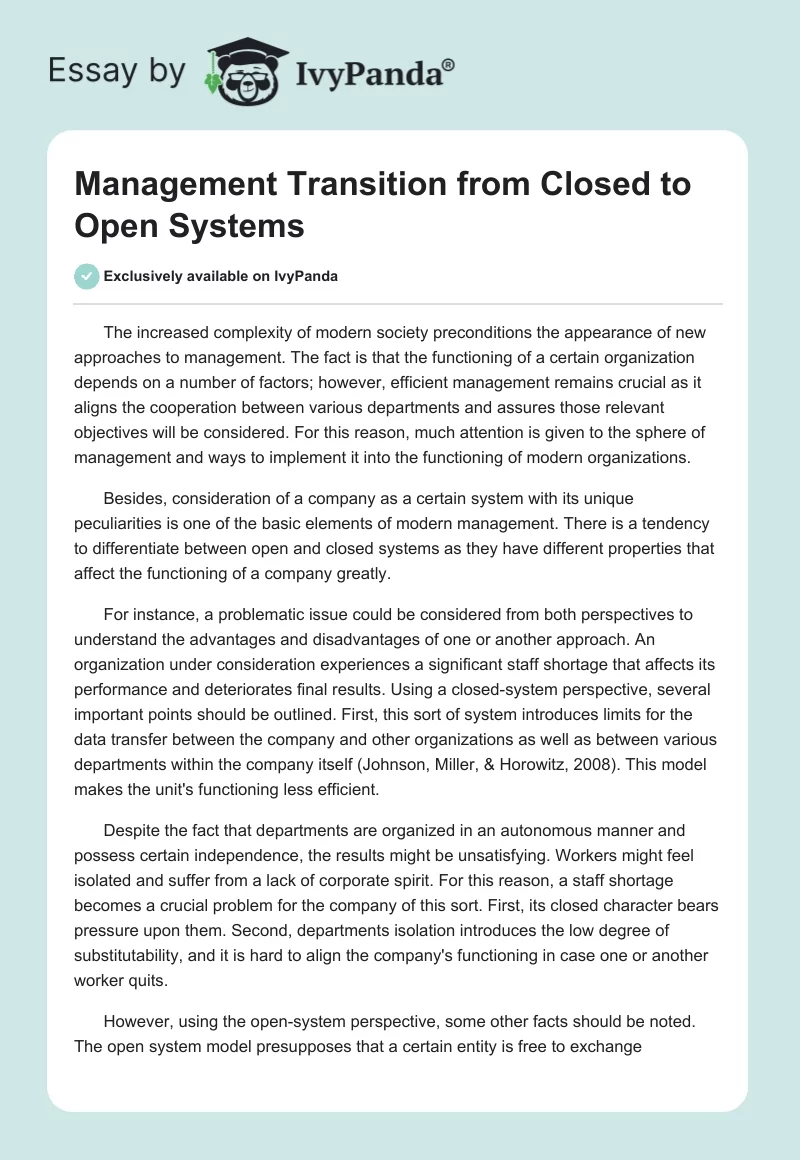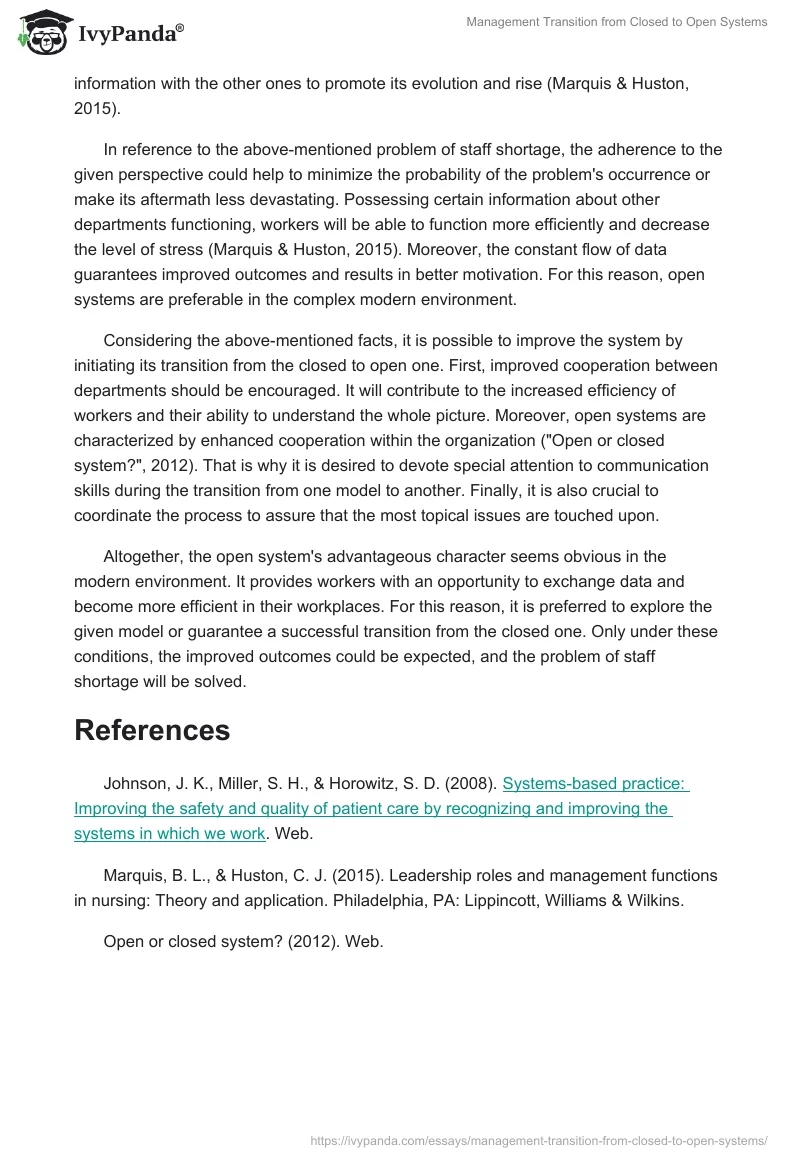The increased complexity of modern society preconditions the appearance of new approaches to management. The fact is that the functioning of a certain organization depends on a number of factors; however, efficient management remains crucial as it aligns the cooperation between various departments and assures those relevant objectives will be considered. For this reason, much attention is given to the sphere of management and ways to implement it into the functioning of modern organizations.
Besides, consideration of a company as a certain system with its unique peculiarities is one of the basic elements of modern management. There is a tendency to differentiate between open and closed systems as they have different properties that affect the functioning of a company greatly.
For instance, a problematic issue could be considered from both perspectives to understand the advantages and disadvantages of one or another approach. An organization under consideration experiences a significant staff shortage that affects its performance and deteriorates final results. Using a closed-system perspective, several important points should be outlined. First, this sort of system introduces limits for the data transfer between the company and other organizations as well as between various departments within the company itself (Johnson, Miller, & Horowitz, 2008). This model makes the unit’s functioning less efficient.
Despite the fact that departments are organized in an autonomous manner and possess certain independence, the results might be unsatisfying. Workers might feel isolated and suffer from a lack of corporate spirit. For this reason, a staff shortage becomes a crucial problem for the company of this sort. First, its closed character bears pressure upon them. Second, departments isolation introduces the low degree of substitutability, and it is hard to align the company’s functioning in case one or another worker quits.
However, using the open-system perspective, some other facts should be noted. The open system model presupposes that a certain entity is free to exchange information with the other ones to promote its evolution and rise (Marquis & Huston, 2015).
In reference to the above-mentioned problem of staff shortage, the adherence to the given perspective could help to minimize the probability of the problem’s occurrence or make its aftermath less devastating. Possessing certain information about other departments functioning, workers will be able to function more efficiently and decrease the level of stress (Marquis & Huston, 2015). Moreover, the constant flow of data guarantees improved outcomes and results in better motivation. For this reason, open systems are preferable in the complex modern environment.
Considering the above-mentioned facts, it is possible to improve the system by initiating its transition from the closed to open one. First, improved cooperation between departments should be encouraged. It will contribute to the increased efficiency of workers and their ability to understand the whole picture. Moreover, open systems are characterized by enhanced cooperation within the organization (“Open or closed system?”, 2012). That is why it is desired to devote special attention to communication skills during the transition from one model to another. Finally, it is also crucial to coordinate the process to assure that the most topical issues are touched upon.
Altogether, the open system’s advantageous character seems obvious in the modern environment. It provides workers with an opportunity to exchange data and become more efficient in their workplaces. For this reason, it is preferred to explore the given model or guarantee a successful transition from the closed one. Only under these conditions, the improved outcomes could be expected, and the problem of staff shortage will be solved.
References
Johnson, J. K., Miller, S. H., & Horowitz, S. D. (2008). Systems-based practice: Improving the safety and quality of patient care by recognizing and improving the systems in which we work. Web.
Marquis, B. L., & Huston, C. J. (2015). Leadership roles and management functions in nursing: Theory and application. Philadelphia, PA: Lippincott, Williams & Wilkins.
Open or closed system? (2012). Web.


